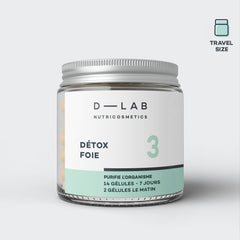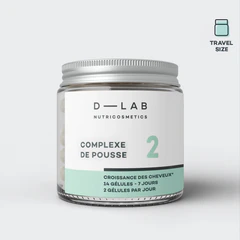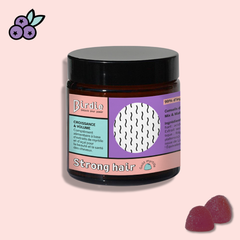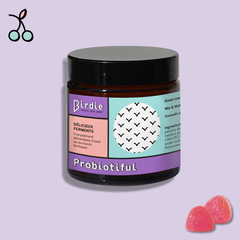
Summer is here, and with it the return of the sun! This is the time when we want to bask in the sun and get some colour! A radiant complexion, a golden tan and a healthy glow, we all dream of it! It is possible, but you must be careful because the skin is a particularly fragile organ.
While the sun provides physical and moral well-being, it can also be dangerous. By exposing yourself to UV rays, you run certain risks. Each sunburn takes its toll on your skin and causes it to age. Not to mention the risk of allergies and cancer... To avoid these inconveniences, it is therefore essential to prepare your skin well a few weeks before and during exposure to the sun.
In this article, follow our advice on how to prepare your skin for the sun's harmful rays and get a radiant tan!
If you'd like to find out more about suncare tips and supplements, please see this article :)
Understanding tanning
1. What is sun capital?
The sun's capital is comparable to an energy reserve from which the body draws with each new exposure to the sun. It determines the capacity of the skin to maintain and protect its internal structures and its proper functioning against UV aggression.
Our sun capital, which varies from one individual to another, is defined at birth and deteriorates over time, until it is exhausted, more or less quickly depending on our experience and behaviour in the sun.
Sunburns quickly consume this credit. According to recent studies, 80% of the sun's capital can be used up before the age of 16, so it is essential to protect it from childhood onwards and to adopt responsible behaviour in the sun.
2. The mechanism of tanning
Tanning is the result of a natural defence mechanism. Faced with the sun, the skin naturally protects itself through two adaptations:
- Firstly, by a thickening of the stratum corneum.
The keratinocytes, located on the surface of the epidermis, multiply in the face of the sun's UV rays and have the objective of creating a protective barrier preventing them from penetrating deep into the layers of the epidermis.
- Then by the melanin production.
Melanocytes are the cells that produce melanin, the dark pigment responsible for skin colour. Melanin's role is to absorb the sun's UV rays and to neutralise free radicals. It protects and darkens the colour of the skin to ensure protection. The more the body is exposed, the more melanin is used.
Tanning is therefore a kind of natural response to the aggression of the sun.
The quality and quantity of melanin vary according to skin type. Those who produce a lot of melanin have better protection against the sun's aggressive rays: they tan more easily and are less sensitive to the effects of the sun. On the other hand, those who produce little melanin will tend to be more sensitive to UV rays and more likely to get sunburned.

Understanding the sun's harmful effects
The sun gives rhythm to our biological cycles and plays a part in our psychological balance, the
It is said to improve sleep and mood, to strengthen our immune system, and to act on skin synthesis of vitamin D. However, if beauty is associated with tanning and the healthy glow provides physical and moral well-being, the sun can be dangerous.
1 - Sunburn
If we are exposed to too much sun, UVA and UVB rays will damage our skin and create a solar erythema, more commonly known as "sunburn". This reaches its maximum intensity after about 24 hours. It is not a real burn but an inflammatory reaction of the cells. The UVB rays destroy our cells, which results in redness. Then the cells break off and you peel.
2 - Actinic ageing
Sun-induced ageing, known as "actinic" ageing, is different from chronological ageing. The first difference is that it induces premature ageing. UVA and UVB rays cause the production of free radicals. These molecules initiate chain reactions that alter DNA, proteins and lipids.
In addition, sun-induced ageing is completely unstructured: wrinkles appear in a completely uncontrolled manner. The wrinkles are deeper and more numerous, the skin rapidly loses its elasticity. Pigment spots also appear.
3 - Pigment spots
Melanin is the body's defence against the potential aggression of the sun: it filters and absorbs UV rays.
However, it is not sufficient to counteract the harmful effects of the sun such as the appearance of spots which are due to localised hyperpigmentation of the skin. Pigment spots are the result of an irregular distribution of melanin which accumulates to form coloured spots.
Sensitive skin and the sun: in & out tips
Before going out in the sun, here are a few simple tips to help you prepare your skin to protect it and optimise your tan.
1 - Exfoliate and moisturise the skin
This is the first step to take before tanning! The drier the epidermis, the more porous it becomes, so it is necessary to moisturize your skin because otherwise it is more sensitive to the sun's aggressions.
Scrub your skin once a week to rid it of dead cells that have accumulated on its surface. Opt for a gentle scrub on sensitive areas such as the face and décolleté. Your skin texture will be refined and this weekly routine guarantees ultra soft skin and a tan that lasts.
After exfoliation, it is essential to moisturise your skin properly to help regenerate damaged skin cells and create a protective barrier on the skin's surface to counteract external attacks such as UV rays and free radicals. Apply a daily moisturiser that is suitable for your skin type.

2 - Protect your skin before and after exposure
To preserve your sun capital, get into the habit of using sun cream or sun oil to protect your skin and avoid sunburn. The sun is aggressive everywhere, not just at the beach. It is absolutely essential to protect your skin from UV rays and free radicals by using sun creams with a minimum SPF 30 to 50.
Finally, don't forget to take care of your skin after your exposure with an after-sun care product, which will allow you to moisturise, soothe your skin and prolong your tan.
3 - Put some colour on your plate
One of the easiest things you can do to prepare your skin for the sun is to eat a balanced diet and have colourful plates. From May onwards, favour colourful, seasonal fruit and vegetables. The more colourful the fruit and vegetables, the richer they are in antioxidants. This allows you to fill up on antioxidants:
- D'antioxidants The skin's natural oils are used to create a protective barrier and to repair dead skin cells. In this way, not only the skin is protected from oxidative stress, but also the entire body.
- dice vitamins to deeply moisturise the skin and fight against skin ageing by reducing oxidative stress.
- D'essential fatty acids which promote healing, suppleness and tone of the skin. They reduce allergic and inflammatory reactions, prevent skin ageing and improve skin hydration.
- From the beta-carotene to activate tanning, found in carrots, tomatoes, oranges, apricots and green vegetables.
4 - Taking food supplements
Rich in vitamins, minerals and plant extracts, food supplements provide our body with what it lacks to fight more effectively against the aggressions of the sun.
They are particularly recommended for light and sensitive skin to reduce the risk of sunburn. You can start your treatment in May or 1 month before going on holiday.
The Total Radiance Duo: tanning and protection
This unique and complete duo combines a tanning, protective and soothing action to enjoy the benefits of the sun while protecting against harmful UV rays. Formulated for sensitive skin, Total Radiance activates and enhances tanning thanks to plant extracts rich in carotenoids. It also protects the skin from photo-vThis product is designed to reduce the appearance of ageing thanks to powerful antioxidants that are clinically proven to be effective.
1 - Activates tanning naturally
The Active Sun Complex allows you to have a beautiful golden complexion while avoiding overexposure to the sun. This innovative 100% natural formula works in three steps: it naturally pigments the skin thanks to carotenoids, it activates and prolongs the tan and protects the skin from damage caused by the sun's rays.
- The plant extracts of apricot and carrot are naturally rich in carotenoids and thus promote a natural tan.
- Astaxanthin and beta-carotene, precursors of vitamin A. Vitamin A is essential for good skin health, it participates in the renewal of skin cells and promotes skin colouring during tanning.
- Copper contributes to the production of melanin and promotes optimal skin pigmentation.
2 - Protects the skin from photoaging
The Skin Calming Complex is designed to calm and soothe sensitive and reactive skin. It contains powerful natural ingredients to combat skin damage caused by the sun's UV rays.
This formula contains SOD (SuperOxydeDismutase) from the pulp of Melon de Provence. This active ingredient has patented antioxidant and anti-inflammatory properties. Its antioxidant power is 37 times more concentrated than pure melon. It reduces cytotoxicity induced by UV rays and preserves the skin from sun damage. Its effectiveness has been proven by clinical studies.
The Active Sun Complex contains a powerful pomegranate extract patented and scientifically tested for its anti-ageing effects on the skin. This extract is very rich in punicalagin polyphenols (titrated at 30%), it helps to regenerate skin cells, tighten the skin texture and prevent the formation of wrinkles. Pomegranate also significantly reduces hyperpigmentation and brown spots caused by overexposure to the sun.
In vitro tests have proven the effectiveness of our ingredient in protecting the skin from UV rays. Our pomegranate extract has proven:
- Protection of tissues against oxidative damage caused by UVB
- Increased production of pro-collagen and hyaluronic acid
- Regeneration of oxidised cells after UVB exposure





